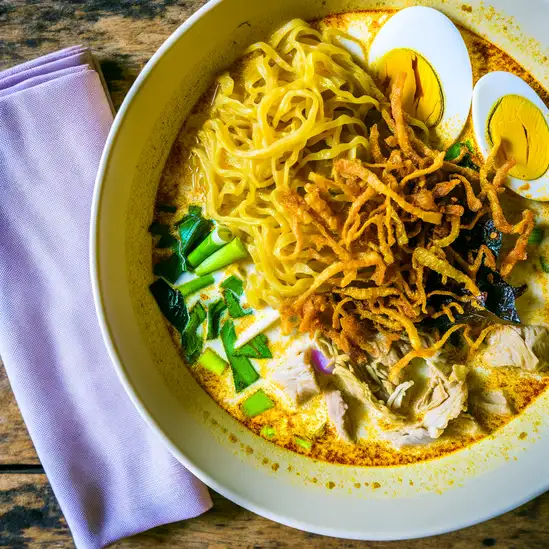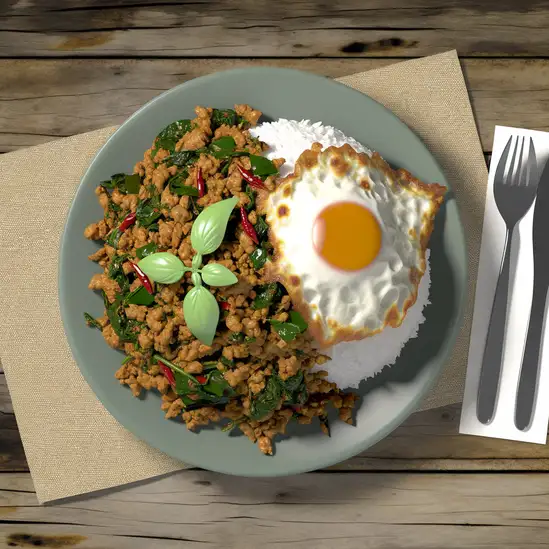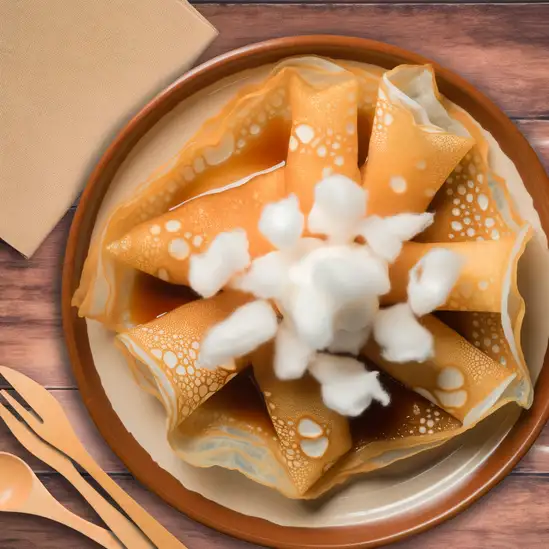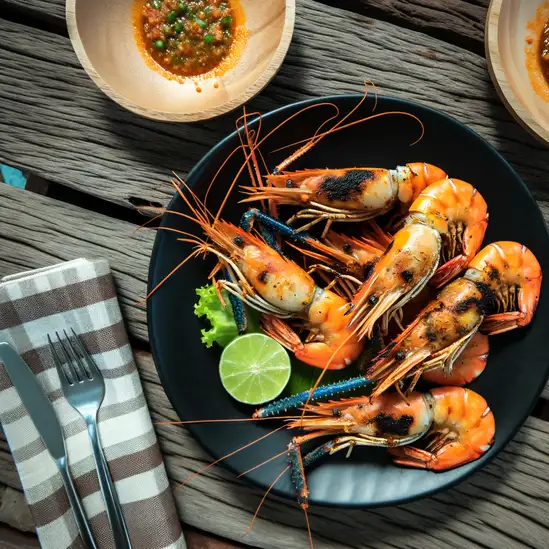



If you ever find yourself wandering through Phra Nakhon Si Ayutthaya,you’ll immediately sense a kind of timeless calm mixed with quiet grandeur. The city feels like stepping into a living history book,where ancient temples rise from the earth like echoes of a glorious past. As you stroll along the riverbanks or cycle through the old town,the warm sun casts golden light on crumbling brick walls and towering Buddha statues,while the gentle hum of tuk-tuks and distant temple bells create a soothing soundtrack. There’s a peaceful rhythm here that invites you to slow down and soak it all in. The air carries a subtle mix of incense,fresh river breeze,and the faint aroma of street food sizzling nearby. Speaking of food,don’t miss the chance to try boat noodles or mango sticky rice from a bustling market stall—each bite bursts with flavors that feel both familiar and exciting. Locals are friendly and welcoming,often eager to share stories about the city’s rich heritage as the former capital of Siam. What makes Ayutthaya truly special is how it balances the past and present. You can explore sprawling temple ruins that whisper tales of kings and battles,then hop on a ferry to watch the sunset paint the sky in shades of pink and orange over the Chao Phraya River. It’s a place where history isn’t just something you read about—it’s something you live,breathe,and carry with you long after you leave.
The information on this page is currently being reviewed by Tripkliq and should be used as a guide only
Eng word: Hello
Eng pronunciation: sah-wah-dee
Local language: สวัสดี
Eng word: Goodbye
Eng pronunciation: lah-gon
Local language: ลาก่อน
Eng word: Thank you
Eng pronunciation: khawp-khun
Local language: ขอบคุณ
Eng word: How much
Eng pronunciation: tao-rai
Local language: เท่าไหร่
Eng word: Toilet
Eng pronunciation: hong-nam
Local language: ห้องน้ำ
Eng word: Help me
Eng pronunciation: chuay-duay
Local language: ช่วยด้วย
Eng word: Yes
Eng pronunciation: chai
Local language: ใช่
Eng word: No
Eng pronunciation: mai
Local language: ไม่
Eng word: Excuse me
Eng pronunciation: kaw-toht
Local language: ขอโทษ
Phra Nakhon Si Ayutthaya was founded in 1350 by King U Thong, who sought to create a capital that was safe from the seasonal floods. It became the second Siamese capital after Sukhothai.
The city experienced a golden age under King Borommatrailokkanat, becoming a center of art, culture, and trade. Its population reached 1 million by the 1700s, making it one of the world's largest cities at the time.
Ayutthaya was a cosmopolitan urban center and trading hub. It had a diverse population including Siamese, Chinese, Japanese, Portuguese, Dutch, French, and English, contributing to its rich cultural heritage.
The city is renowned for its distinctive architecture blending Siamese, Khmer, Sri Lankan, and Persian influences. Its ruins, characterized by prang (reliquary towers) and gigantic monasteries, are today a UNESCO World Heritage Site.
Situated on an island surrounded by three rivers, Ayutthaya was perfectly positioned for trade, accessible to both the Gulf of Thailand and, through the Chao Phraya river, the interior. This facilitated extensive international trade.
The Ayutthaya Kingdom was famous for its Elephant Corps, considered the backbone of its military. These war elephants were an integral part of the kingdom's defense and power projection.
Ayutthaya engaged in active diplomacy and maintained extensive foreign relations. The kingdom sent and received emissaries from as far as the Vatican and the French court.
This iconic temple, known for its three stupas, served as a model for Bangkok’s Wat Phra Kaew. It was the holiest temple on the site of the old Royal Palace in Ayutthaya before the complex was destroyed.
The Royal Elephant Roundup held in Ayutthaya was a spectacular event where wild elephants were trained for work and warfare, showcasing the kingdom's expertise in elephant domestication.
In Phra Nakhon Si Ayutthaya, the most common Power Adaptor is Type A, Type B, Type C, Type F.









A Northern Thai coconut curry noodle soup, featuring egg noodles, a rich curry broth, and topped with crispy noodles and pickled mustard greens.

A famous Thai stir-fried noodle dish made with rice noodles, eggs, tofu or shrimp, bean sprouts, and peanuts, often garnished with lime.

Stir-fried minced pork with holy basil, garlic, and chili, typically served over rice and topped with a fried egg.

A traditional Thai dessert consisting of thin, crepe-like pancakes filled with sweet, fluffy cotton candy, often served with a drizzle of syrup.
.webp)
A flavorful noodle soup typically made with beef or pork, served with a rich broth, herbs, and spices, often enjoyed in small bowls.

Fresh river prawns grilled to perfection, often served with a spicy dipping sauce, showcasing the local seafood delicacies.
.webp)
A spicy salad made from shredded green papaya, tomatoes, green beans, peanuts, and a tangy dressing, offering a refreshing taste.
Bangkok is one of those cities that grabs you the moment you step out into its bustling streets. There’s this electric energy in the air—a mix of honking tuk-tuks,sizzling street food stalls,and the chatter of locals weaving through markets. The city feels alive,like it’s constantly moving and breathing,yet somehow it balances this chaos with moments of serene beauty,like the golden spires of temples catching the afternoon sun or quiet canals reflecting the sky.
Walking through Bangkok,you’ll be hit by a whirlwind of scents:fragrant jasmine from flower vendors,the sharp tang of lemongrass and chili from street carts,and the sweet aroma of mango sticky rice tempting you at every corner. The colors are just as vivid—neon signs flicker alongside traditional wooden shophouses,and monks in saffron robes glide past modern skyscrapers. It’s a city where old and new dance together effortlessly.
What really makes Bangkok special is its warmth and openness. The people here have a genuine kindness that shines through,whether you’re bargaining at Chatuchak Market or sharing a laugh over a bowl of spicy boat noodles. The culture is rich and layered,from the intricate rituals at Wat Pho to the lively festivals that light up the streets. Visiting Bangkok feels like stepping into a story that’s still unfolding,full of surprises and moments that stay with you long after you leave.
Imagine stepping into a place where the air hums with the gentle rhythm of waves lapping against sun-warmed shores,and the scent of salty sea mingles with fragrant street food stalls. That’s Phuket for you—a vibrant island that feels alive in every sense. It’s not just the stunning beaches that grab you,but the way the island pulses with a laid-back energy,where colorful markets buzz with chatter and the aroma of grilled seafood fills the air. Walking through the old town,you’ll find charming Sino-Portuguese buildings painted in pastel hues,their shutters creaking softly in the tropical breeze,while tuk-tuks zip by,adding a playful soundtrack to your explorations.
Phuket’s character is a beautiful blend of tradition and liveliness. Temples with golden spires peek out from lush greenery,inviting quiet moments of reflection,while nearby,night markets burst with life—vendors calling out,sizzling woks,and the sweet tang of mango sticky rice tempting your taste buds. The island’s culture is warm and welcoming,with locals who smile easily and share stories over cups of strong Thai coffee or fresh coconut water.
What makes Phuket truly special is how it wraps you in its embrace—whether you’re watching a fiery sunset from a cliffside bar,diving into crystal-clear waters teeming with vibrant marine life,or simply savoring the spicy kick of a freshly made curry. It’s a place that invites you to slow down,soak in the colors,sounds,and flavors,and leave with a heart full of unforgettable moments.
If you’re thinking about Pattaya,imagine a place where the energy hums like the waves crashing along its shores,but with a laid-back twist that invites you to slow down and soak it all in. The city pulses with life—colorful markets buzz with chatter and the scent of grilled seafood mingles with salty sea air. As you stroll along the beach,the warm sun kisses your skin while the distant laughter of children and the rhythmic beat of live music from nearby bars create a soundtrack that feels both vibrant and welcoming.
What really makes Pattaya stand out is its blend of contrasts. You’ll find sleek,modern high-rises standing shoulder to shoulder with humble street vendors selling fresh mango sticky rice or spicy papaya salad. The city’s character is a lively mix of local Thai culture and international influences,making it a melting pot where you can dive into traditional temples one moment and then explore quirky art galleries or bustling night markets the next.
Don’t miss the chance to experience the city’s unique charm at sunset—head to a rooftop bar or the beach itself,where the sky explodes in shades of pink and orange,and the air cools just enough to make you want to linger. Pattaya isn’t just a place to visit; it’s a place to feel alive,to taste new flavors,hear new stories,and create your own unforgettable memories.
If you find yourself wandering into Amphoe Mueang Krabi,get ready to be wrapped in a warm embrace of nature and culture that feels both vibrant and soothing. The moment you step into this lively district,the salty tang of the Andaman Sea mingles with the sweet scent of tropical flowers,setting a scene that’s as refreshing as it is inviting. The streets buzz gently with the chatter of locals and the clinking of street food stalls,where the aroma of grilled seafood and spicy herbs teases your senses and promises a feast.
What makes Mueang Krabi truly special is how effortlessly it balances its laid-back island charm with a pulse of authentic Thai life. You’ll find yourself wandering through bustling markets filled with colorful fruits,handmade crafts,and the friendly smiles of vendors eager to share stories. The rhythm of daily life here is unhurried but alive,with monks in saffron robes gliding past ancient temples,and fishermen hauling in their catch against a backdrop of limestone cliffs that rise dramatically from the turquoise waters.
Spend your days exploring hidden coves or kayaking through mangrove forests,and your evenings savoring fresh seafood at a beachside shack while the sun dips low,painting the sky in fiery hues. There’s a genuine warmth in the air—both from the tropical sun and the people—that makes you feel like you’re not just visiting,but truly belonging. Mueang Krabi isn’t just a place to see; it’s a place to feel,taste,and remember long after you’ve left.
If you find yourself wandering into Amphoe Mueang Chiang Mai,it’s like stepping into a lively tapestry woven with ancient charm and modern buzz. The moment you stroll through its old city walls,you’re greeted by the gentle hum of scooters weaving past centuries-old temples,the scent of incense mingling with sizzling street food. There’s a rhythm here that feels both peaceful and vibrant,like the city is breathing stories through its narrow lanes and bustling markets.
What really makes Chiang Mai special is how it balances tradition and creativity. You can watch monks in saffron robes collecting alms at dawn,then spend the afternoon sipping rich,locally grown coffee in a hip café filled with art and laughter. The night markets are a sensory feast—bright lanterns flicker overhead,vendors call out with friendly smiles,and the air is thick with the aroma of grilled meats,spicy papaya salad,and sweet mango sticky rice. It’s a place where every corner invites you to slow down and savor the moment.
Beyond the city’s pulse,the surrounding mountains cradle a cooler breeze and lush greenery,offering a refreshing escape from the tropical heat. But it’s the warmth of the people—their genuine smiles and easy hospitality—that truly stays with you. Chiang Mai isn’t just a destination; it’s a feeling,a place where history,culture,and everyday life blend into an unforgettable experience that keeps you coming back for more.
If you’re dreaming of a place where the pace slows just enough to let you breathe in the salty sea air and feel the warm sun kiss your skin,Koh Samui is that kind of magic. The island hums with a laid-back energy that’s both soothing and invigorating—like a gentle invitation to explore without rushing. Palm trees sway lazily against a backdrop of turquoise waters,and the soft crash of waves creates a soundtrack that instantly melts away any stress. Walking along the beaches,you’ll catch the scent of frangipani mingling with the faint aroma of grilled seafood from nearby beachside shacks.
What really makes Koh Samui special is its blend of vibrant local culture and natural beauty. The island’s temples,like the striking Big Buddha,offer moments of quiet reflection amid the tropical buzz. At night,the markets come alive with colorful stalls selling everything from fresh mango sticky rice to spicy papaya salad,each bite bursting with bold,fresh flavors that tell stories of the land and sea. Friendly locals greet you with warm smiles,eager to share their traditions and stories.
Beyond the beaches,there’s a wild side to Koh Samui—lush jungles with hidden waterfalls,secret viewpoints that reward you with breathtaking panoramas,and cozy cafes tucked away where you can sip rich Thai coffee while watching the world go by. It’s a place that feels both familiar and wonderfully new,where every moment invites you to slow down,savor,and soak in the island’s unique rhythm.
Scammers may sell fake tickets to attractions or events, leaving tourists unable to enter the venue.
Individuals posing as official tour guides may offer their services and provide inaccurate information or lead tourists to overpriced shops.
Tourists are taken to gem shops where they are pressured into buying overpriced or fake gemstones.
Tourists may be accused of damaging rented motorbikes and forced to pay for repairs they did not cause.
Tourists may be charged exorbitant prices for boat tours around the city’s rivers and canals.
Scammers may tell tourists that a popular temple is closed and offer to take them to a different attraction, often leading to overpriced shops or services.
Tuk-tuk drivers may overcharge tourists for short rides or take them to shops where they receive commissions.
Thailand has very strict drug laws, and this includes Phra Nakhon Si Ayutthaya. The possession, use, or trafficking of illegal drugs can result in severe penalties, including long prison sentences and even the death penalty for serious offenses. This applies to all types of illegal drugs, including marijuana, which remains illegal despite some recent discussions about medical use. Tourists should avoid any involvement with drugs to avoid severe legal consequences.
In Phra Nakhon Si Ayutthaya, as in the rest of Thailand, smoking is regulated by strict laws. Smoking is prohibited in public places such as temples, historical sites, public parks, markets, and public transportation. There are designated smoking areas where smoking is allowed. Violating these regulations can result in fines. Additionally, smoking is banned in all indoor public places, including restaurants and bars.
Vaping is illegal in Thailand, including Phra Nakhon Si Ayutthaya. The import, sale, and possession of e-cigarettes and vaping equipment are prohibited. Tourists caught with vaping devices can face severe penalties, including fines and imprisonment. It is strongly advised not to bring any vaping equipment into the country.
What are other people saying about Phra Nakhon Si Ayutthaya?
Recent Social posts about Phra Nakhon Si Ayutthaya
There is nothing to show you for now.